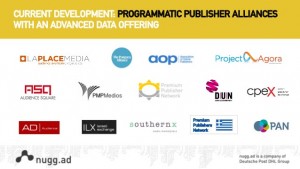They say that practice makes perfect, and it is true not only with anything creative but also with the working world. Training is an integral part of making any company efficient and profitable. Training done poorly, however, can result in a major decrease in productivity and a loss of investment dollars. Training done well will have the reverse impact, helping a company gain more money from its investment in training, while also increasing efficiency and even the safety of the employees that work for you.
Over the course of this piece, we will address how training programmes can have a huge return on investment, while at the same time showing you how to measure that investment return.
We will begin with finding the right training programme.
Define It
You need to define the need for your business for the training. This training can come in many forms, from training new employees to training veteran employees on a new system. Once you define the need for the training programme, you can begin to assess which one is going to give you the best return on investment. For example, a training programme that has been designed to show new employees how to use a new system is going to be a waste of time for a veteran employee. That will translate into a poor return on investment for you.
Is it right for you?
The next step in this process is to determine if the training is what your company needs. It is common to address issues within an organization through training, but this doesn’t mean you will get a large return on investment. You want to make sure that training is going to be the right solution for your company in this regard. You can determine if your company needs this training by asking yourself if your employees know their job and the product or service that you are selling. If they do, then training would be a waste of time for you and the return on investment would not be very large. If they do not know how then training is the best solution.
What do you want in the end?
Having a clear goal in mind is extremely important when it comes to any return on investment scenario. For this reason, you want to know what you want to come of the training. You want to make sure that the training achieves exactly what you want it to. You should make sure to ask yourself what the training will achieve for the person being trained, and for the company, and what the outcome from it will be. Knowing that will help you make the most efficient choice.
The Program Itself
The program you want for your company will address several key factors. There are several things to determine about the program to make sure that it is the program that works best for you. Remember, this is all about return on investment for you or your company.
Questions to ask include:
- Is this for a single employee or a group of employees?
- Is this for new employees or veteran employees, or is it for both sets?
- Is this training best one-on-one, in a classroom environment, or in an online course?
- How long does the training need to be to be most efficient, with the shortest amount of downtime for employees?
- Is there a training program that can accomplish this now, or does one need to be designed specifically for the company?
- Is there a support system in place to ensure that the employees have learned new skills and applied those skills to their roles?
Answering these questions will give you a higher return on investment with your training programme.
The Metrics
This is what it is all about. You won’t know your return on investment without knowing the metrics of your training regime. You need to determine how you are going to measure the success of the training. This can be done in a number of ways, including through software, customer feedback and more. There are several things to consider with your metrics system.
- How often do you want to measure metrics? Is this a daily, weekly or monthly measurement?
- What metrics are already being tracked?
- Are there metrics that can be added into this to get a higher degree of accuracy?
- How will the metrics themselves to tracked?
The Return on Investment
Now we get to the nitty-gritty aspect of training metrics. It is all about the return on investment, but how do you determine that return on investment? Well, there are several ways to do this. If you are a restaurant and your employees have not been providing customers with Customer Loyalty Cards, you can easily measure this without software. Train your employees to push the Customer Loyalty Cards and look at the average number of Customer Loyalty Cards that customers have signed up for in the previous month or more. Once you have that, complete the training and then track how many cards are signed up for after the training. If the number increases, then you have achieved a return on investment with the training.
Often, it is not that easy to determine the return on investment, and that is where the metrics come in.
To determine the return on investment, which may not be evident immediately, do the following:
- Create a benchmark for measuring the success before the training.
- Monitor the measurements at regular intervals after the training.
- Take the return on investment at regular intervals to determine the success.
The return on investment is done with the following calculation:
Return on Investment = Change in Cost of Activity/Total Cost of Training x 100%
You want your return on investment value to be above 100 percent.
So, if your training results in time savings of $ 7,000 based on your metrics, and the cost of the training itself was $ 3,250, then the calculation is going to be:
ROI = 7,000/3,250 x 100%
ROI = 2.15 x 100%
ROI = 215%
This means that you have had a huge return on investment. That shows you that the training program has been a big success, and the efficiency of your business has increased immensely.
The Stats
It is all well and good to talk about return on investment, but we want to show you just how other companies have seen a success with training programs to increase efficiency.
In 2015, according to Tauber, tech firms spent $ 150 billion on training employees, averaging $ 1,847 per year per employee. It was found that these companies had 65 percent less voluntary turnover than other companies in the industry.
A big success story with training programs was the Cheesecake Factory, which spends $ 2,000 per year per employee to help train them. As a result of this, the company enjoys a sales figure of $ 1,000 per square foot, which is well above the $ 500 per square foot seen by other restaurants and the industry average itself.
Companies that used training personnel from ADP, for things like managing virtual teams and proper time management, found a seven percent growth in sales.
Discover Financial, one of the largest companies in the world, began using e-learning, videos, and self-study for 70 per cent of its training. What they found was that there was 42 percent less attrition, and a six percent increase in employee satisfaction overall.
Hyatt, a huge hotel chain, creating a Changing the Conversation training programmed for their employees to show the opportunities in the company for professional growth. As a result of this training programme, the company sees housekeepers stay with the company for an average of 12 years, well above the 3.8 years that is the average in the industry.
Oakfield Software, a company dealing in visual planning software for organisations, has shown that companies that invest in training can see huge returns, and when those returns are proven, this leads to a culture of continuous improvement.
Culture is important
Training isn’t a simple matter of sending people on courses and then hoping they do their job better, it’s much more matter of instilling a culture with the workplace that strives for continuous improvement.
When training not only provides a return on investment, but that return can be proven with solid metrics, you then get a company that is ready for visible and steady growth, lower staff turnover and increased profits.
Business & Finance Articles on Business 2 Community(91)
Report Post






